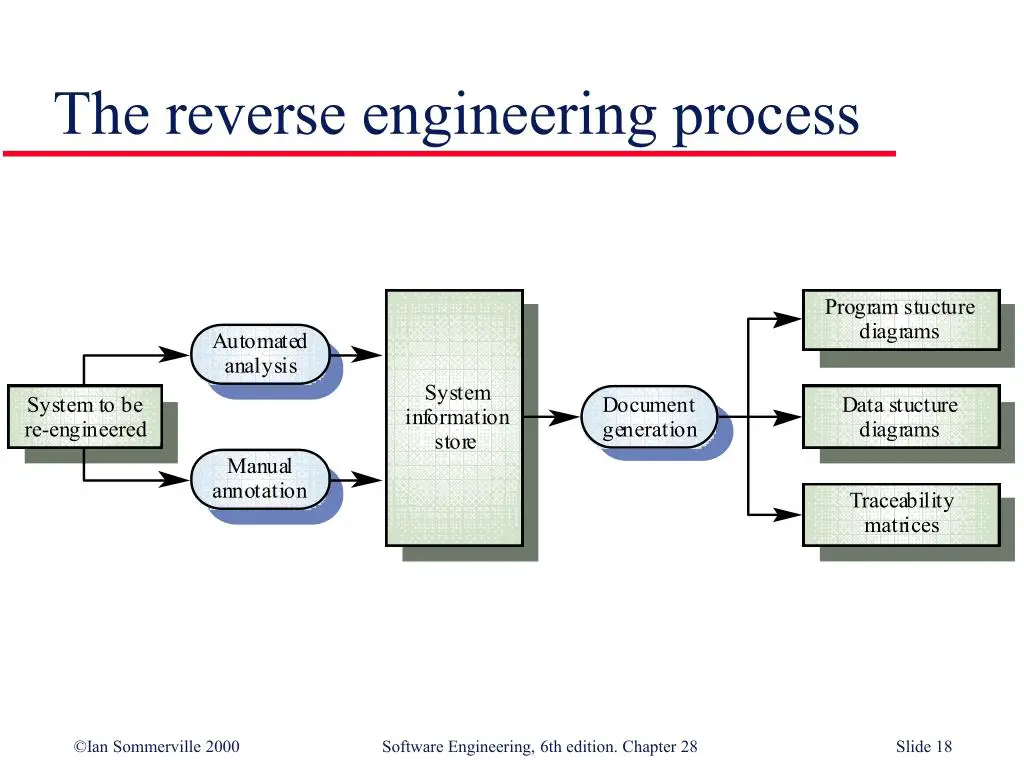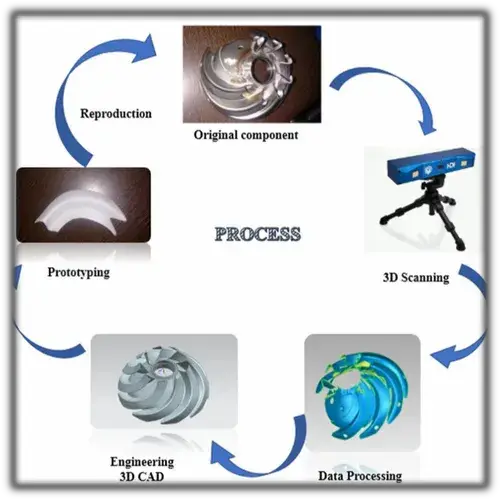Reverse Engineering Software Development

Reverse engineering software development is a technique used to analyze and understand the design, implementation, and functionality of an existing software system. It involves decompiling the software into a human-readable format, which allows developers to study the source code and extract valuable information.

Process of Reverse Engineering

The reverse engineering process typically involves several steps:
- Disassembly: Breaking down the compiled code into assembly language.
- Decompilation: Translating assembly language back into high-level programming language.
- Analysis: Studying the decompiled code to understand the software’s functionality, structure, and relationships.
- Documentation: Creating documentation that captures the findings of the analysis, including class diagrams, sequence diagrams, and other representations.
Benefits of Reverse Engineering
Reverse engineering offers numerous benefits:
- Understanding Legacy Systems: Enables developers to maintain and enhance legacy systems that lack documentation.
- Security Assessment: Helps identify vulnerabilities and security flaws in existing software.
- Compliance Verification: Facilitates compliance with regulatory requirements by analyzing software against industry standards.
- Innovation: Provides insights into software design patterns and techniques, sparking new ideas for development.
- Competitor Analysis: Allows companies to analyze competitors’ software and gain strategic advantages.
Applications of Reverse Engineering
Reverse engineering finds applications in various domains:
- Redesign and Re-engineering: Rebuilding outdated software using modern technologies and architectures.
- Bug Identification: Identifying and resolving defects in existing systems.
- Code Optimization: Improving software performance by identifying and eliminating bottlenecks.
- Interoperability: Creating bridges between different systems with incompatible interfaces.
- Transformation: Migrating software from one platform or language to another.
Challenges of Reverse Engineering
Reverse engineering also presents challenges:
- Incomplete or Inaccurate Decompilation: Decompilation tools may not always produce accurate representations of the original source code.
- Difficulty in Understanding Code: Complex or obfuscated code makes it challenging to extract meaningful information.
- Intellectual Property Concerns: Reverse engineering may raise legal issues if the analyzed software is under copyright or patent protection.
- Time and Resource Requirements: Reverse engineering can be a time-consuming and resource-intensive process.
Overall, reverse engineering software development is a valuable technique that allows developers to gain insight into existing systems and leverage that knowledge for various purposes, ranging from maintenance to innovation.## Reverse Engineering Software Development
Executive Summary
Reverse engineering software development is a specialized approach in software engineering that involves taking an existing software application or system, and analyzing and understanding its internal workings. In this comprehensive guide, we delve deep into the concept of reverse engineering in software development, examining its various aspects, techniques, and best practices. By mastering the art of reverse engineering, organizations can gain valuable insights into their own software systems as well as those of their competitors. This knowledge empowers them to adapt, innovate, and gain a competitive edge in the ever-evolving software landscape.
Introduction
Reverse engineering software development has gained significant prominence in recent years, particularly with the rise of complex software systems and the need for software maintenance and evolution. By meticulously dissecting and comprehending the design, architecture, and implementation of existing software, organizations can unlock a wealth of knowledge that can be leveraged for numerous strategic purposes.
FAQs
1. What are the primary objectives of reverse engineering software development?
Reverse engineering aims to achieve several key objectives, including:
- Understanding software complexity: Reverse engineering helps organizations gain a thorough understanding of the intricate structure and inner workings of software systems.
- Facilitating software maintenance: By deciphering the design and implementation details of existing software, reverse engineering enables efficient maintenance and evolution.
- Improving software quality: Reverse engineering allows developers to analyze the flaws and inefficiencies in software, thereby identifying areas for improvement and optimizing software performance.
2. What are some notable advantages of reverse engineering software development?
Organizations can reap numerous benefits from reverse engineering software development, such as:
- Enhanced innovation: Reverse engineering fosters innovation by empowering organizations to learn from the strengths and weaknesses of existing software solutions, sparking new ideas and approaches.
- Improved security: By gaining a deep understanding of software architecture and design, organizations can identify potential vulnerabilities and implement proactive security measures to mitigate risks.
- Agile software development: Reverse engineering supports agile software development methodologies by providing insights into software behavior, enabling developers to adapt quickly to changing requirements.
3. What are the essential steps involved in a reverse engineering software development process?
Reverse engineering software development typically follows a structured process, which generally includes the following stages:
- Software selection: Identifying the target software application or system for reverse engineering.
- Code acquisition: Obtaining the source code or executable files of the target software.
- Decompilation: Translating compiled code into human-readable source code.
- Analysis and documentation: Thoroughly examining the source code, identifying design patterns, data structures, and algorithms used.
- Refactoring: Reorganizing and restructuring the reverse-engineered code to improve understandability and maintainability.
Top 5 Subtopics in Reverse Engineering Software Development
Architectural Analysis
Architectural analysis involves examining the high-level design of the software system, focusing on understanding its overall structure, components, and their interactions. Key aspects of architectural analysis include:
- Component identification: Identifying the individual modules, packages, or classes that make up the software system.
- Dependency analysis: Studying the relationships between components, including their dependencies and communication patterns.
- Flow analysis: Tracing the flow of data and control through the system, identifying key control paths and decision points.
Functionality Analysis
Functionality analysis aims to unravel the specific actions and behaviors supported by the software system. This involves studying the source code to identify the different functions, methods, and algorithms implemented. Important aspects of functionality analysis include:
- Use case extraction: Defining the various scenarios and situations in which the software system is expected to operate.
- Sequence diagramming: Creating visual representations of the steps involved in each use case, capturing the flow of control and data.
- Input/output analysis: Identifying the inputs and outputs of the software system, including data formats, validation rules, and error handling mechanisms.
Design Pattern Identification
Design patterns are reusable solutions to common software development problems. Reverse engineering often involves identifying and understanding the design patterns employed within the target software. Key aspects of design pattern identification include:
- Pattern matching: Comparing the code structure and behavior to known design patterns, such as MVC, factory, or Singleton.
- Refactoring for patterns: Restructuring the code to conform to established design patterns, improving its modularity and reusability.
- Anti-pattern detection: Identifying and addressing anti-patterns, which are poor design choices that can lead to code complexity and maintainability issues.
Performance Analysis
Performance analysis evaluates the efficiency and scalability of the software system. This involves examining aspects such as resource utilization, execution speed, and response times. Key aspects of performance analysis include:
- Profiling: Using specialized tools to monitor the system’s performance, identifying bottlenecks and performance hot spots.
- Load testing: Simulating user load and analyzing the system’s behavior under varying conditions to assess its scalability and stability.
- Optimization techniques: Identifying and implementing optimizations to improve the system’s performance and efficiency.
Security Analysis
Security analysis is crucial for ensuring the confidentiality, integrity, and availability of the software system. Reverse engineering helps identify potential security vulnerabilities and develop mitigation strategies. Key aspects of security analysis include:
- Vulnerability assessment: Scanning the code for known vulnerabilities, such as SQL injection, cross-site scripting, and buffer overflows.
- Threat modeling: Identifying potential threats to the system and assessing their impact on its security.
- Secure coding practices: Reviewing the code for security best practices and recommending improvements to enhance its resilience against security breaches.
Conclusion
Mastering the art of reverse engineering software development empowers organizations with a powerful tool for understanding, adapting, and innovating in the competitive software landscape. By carefully following a structured process and leveraging advanced techniques, organizations can unlock valuable insights into their own software systems as well as those of their competitors. Reverse engineering software development is an indispensable skill in the modern software engineering arsenal, providing organizations with the ability to gain a deeper understanding of software functionality, improve performance and security, and drive continuous innovation.
Keyword Tags
- Reverse engineering
- Software development
- Architectural analysis
- Functionality analysis
- Security analysis
